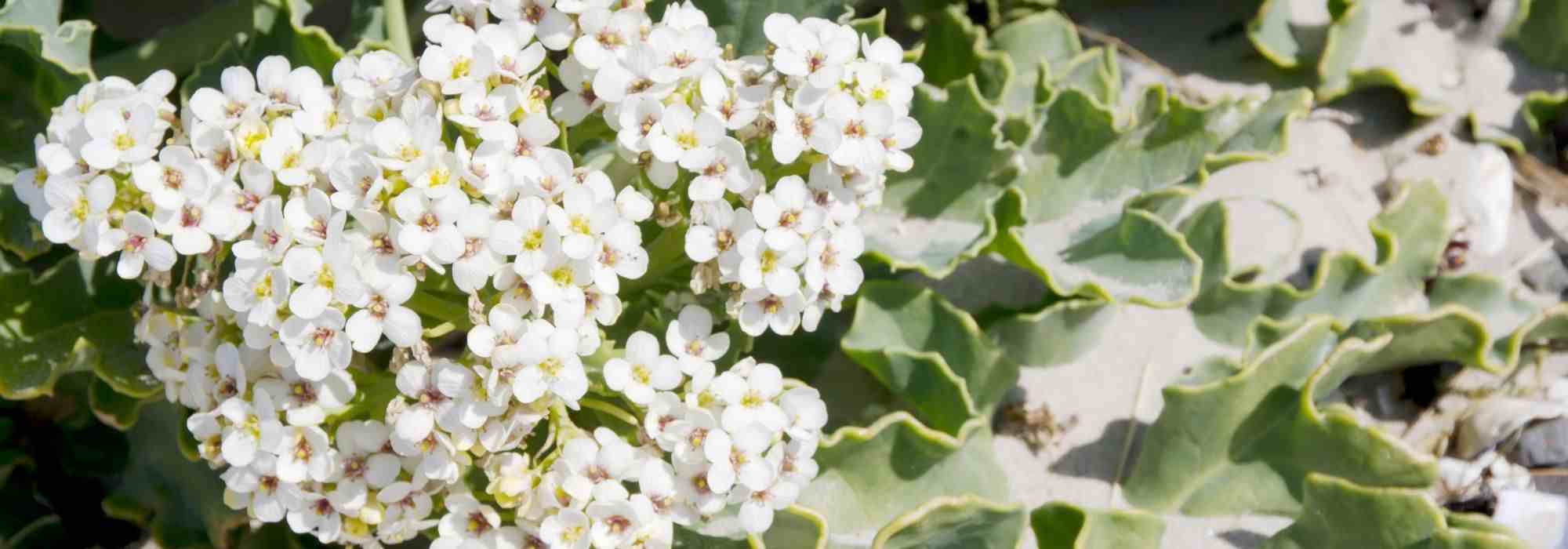
Associate the Crambe
7 pairing ideas to spark inspiration
Contents
The Crambe is a perennial plant from the cabbage family. The two best-known species are Sea Kale –or maritime–, Crambe maritima, whose young shoots are edible, and Cloud Cabbage, Crambe cordifolia, which, as its Latin name suggests, has heart-shaped leaves.
The different species of Crambe all have great ornamental qualities thanks to their very light white flowering. The small flowers exude a delightful fragrance from May to July. They form a sort of airy cloud above the foliage, which is a beautiful green or grey with bluish reflections, evergreen in Sea Kale and deciduous in Cloud Cabbage.
Crambe thrives in cool, well-drained soils and enjoys sunny exposures. It needs space and does not tolerate root competition. Furthermore, once established, it is not recommended to transplant it. While it can manage in poor soils, Crambe will flourish better in rich, yet always very well-draining soil.
In a perpetual vegetable garden
The Sea Cabbage, whose young shoots are edible, can be included in a perennial vegetable garden.
For ornamental appeal, you can associate it with artichokes and cardoons featuring their grey, finely cut foliage. A few dwarf Jerusalem artichokes will add their yellow flowering to the mix, but be sure to place them on the side to avoid having to dig up surrounding plants during each harvest. And why not, as a backdrop, on a trellis for a splash of colour in the summer, a tuberous nasturtium with orange flowers or tuberous wisteria with purple flowers, which will have the advantage of fixing nitrogen and thus enriching the soil.
You can thus create a small garden that, in addition to being nourishing, will be very decorative.
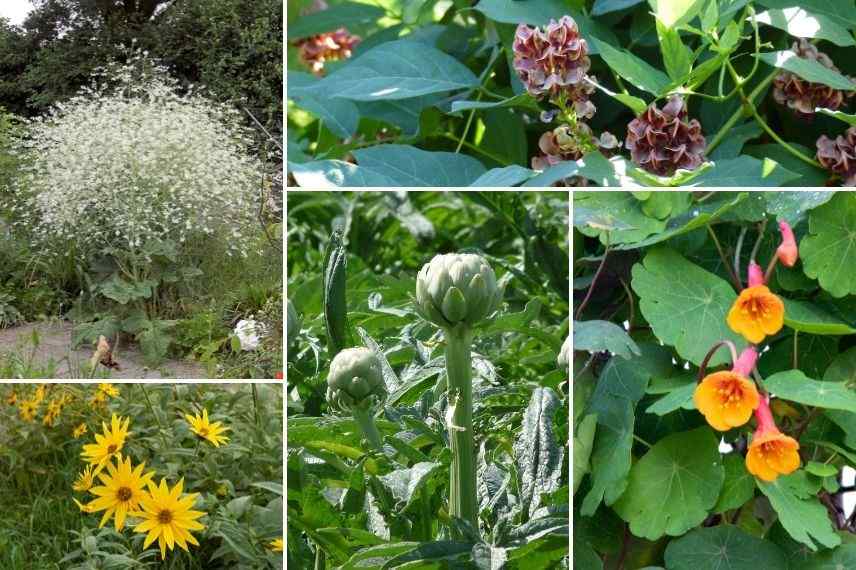
Crambe cordifolia, Apios americana, Helianthus tuberosus, Artichoke and Tropaeolum tuberosum
In a seaside garden
Who says Sea Cabbage, naturally thinks of seaside gardens! The Crambe maritime is indeed perfectly suited to the specific conditions of the coast, namely wind, salt spray, and generally rocky, poor soils.
Both the sea campion and the sea thrift are small plants with delicate flowers, ideal for this type of garden. The Glaucium flavum is a sand poppy with glaucous foliage, which will complement that of the Crambe maritime.
Yucca, rosemary, and lavender (the ‘Hidcote’ variety, for example) will provide structure with their different forms, while the stipas or Angel’s Hair will add movement to the scene.
The cloud cabbage, which is much larger than the sea cabbage and can reach 1.80 m in height, must be protected from the wind to prevent its tall stems from breaking.

Crambe maritima, Lavandula angustifolia ‘Hidcote’, Glaucium flavum f. fulvum (photo Rictor Norton), Stipa tenuifolia and Silene maritima ‘Weisskehlchen’
Discover other Crambe
View all →Available in 1 sizes
Available in 1 sizes
Available in 1 sizes
Available in 1 sizes
Available in 1 sizes
Available in 1 sizes
In a romantic garden
Crambe, with its very airy flowering, will be wonderful in a romantic-inspired garden, reminiscent of English cottage gardens, where softness and fragrance take centre stage.
The rose is emblematic of this type of atmosphere. The cloud of white flowers from the crambe will soften the sophisticated appearance of the rose. The velvety grey leaves of lamb’s ear, Stachys bizantina, complement well the blue-tinged foliage of the Crambe. Ornamental alliums with blue flowering such as Allium ‘Globemaster’ or Allium ‘Pinball Wizard’ will complete the harmony.
The Sisyrinchium bellum forms small, evergreen clumps of blue-green and is adorned with small star-shaped blue flowers during the summer. Ideal for the foreground of the sea kale! For the cloud cabbage, it would be better to opt for a taller plant, such as Himalayan catmint, Nepeta clarkei, which will hide the foliage when it wilts after flowering.
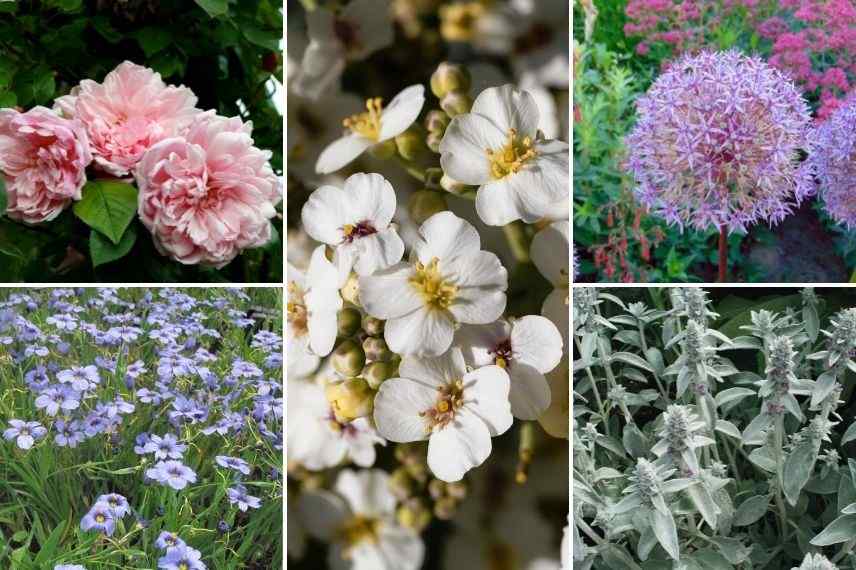
Rose ‘Albertine’ (photo Spedona), Crambe maritima, Allium globemaster, Sisyrinchium bellum and Stachys bizantina (photo Jean-Paul Grandmont)
In a natural garden
Highly melliferous, crambe has its place in a natural garden, where it will attract numerous pollinators.
With their graphic and spiny silhouette, Echinops, these thistles with blue globe inflorescences, will contrast with the airy appearance of crambe. The blue spike flowering of wood sage Salvia nemerosa ‘Blue Marvel’ or ‘Ostfriesland’ also attracts, many butterflies during summer. Furthermore, its semi-evergreen foliage will hide the base of Crambe cordiflora – or naked cabbage – when the leaves wilt. Nepetas can also play this role.
Mulleins and white mullein, in addition to giving a wild touch, will provide beautiful verticals, just like lupins such as the lupin ‘West Country Masterpiece’. Meanwhile, poppies with often glaucous green foliage, like the Papaver somniferum ‘nigrum’ for example, will add small touches of colour.

Crambe cordifolia, Echinops ritro ‘Veitch’s Blue’ (photo FD Richards), Papaver somniferum ‘Nigrum’ (photo Wikipedia), Verbascum ‘Jackie’ and Salvia nemorosa ‘Blue Marvel’
In a mixed border
Crambe are very interesting in mixed borders due to the lightness of their flowering. Sea cabbages, which are shorter and have beautiful evergreen foliage, can be positioned at the front or in the middle, while cloud cabbages should be placed towards the back of the beds, or at least in the centre, to hide the foliage after flowering.
In the foreground, hardy geraniums will form lovely cushions that will be covered in flowers. With ‘Rozanne’ geranium, you will achieve a harmony of colours over several months.
To the lightness of the white flowering of crambe, you can combine topiaries of boxwood, which are very structural. Delphiniums will bring colour and verticality with their tall flower spikes, which also have the advantage of attracting butterflies. These can be replaced or combined with foxgloves.
The peony is also a classic in mixed borders. Achilleas, sages, and nepeta can be associated with it.
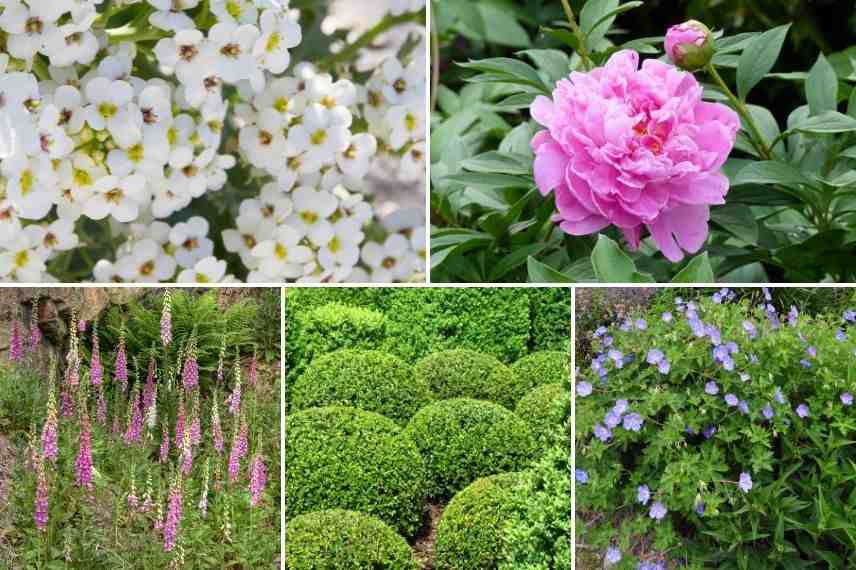
Crambe maritima, Paeonia lactiflora ‘Dr Alexander Fleming’, Digitalis purpurea (photo JörgHempel), Boxwood topiary and Geranium ‘Rozanne’
In a cool rockery
White pebbles make an ideal mulch for this type of rockery, highlighting the blue-grey foliage of Crambe maritima.
The airy flowering of Crambe will contrast with that of the stonecrops, such as Sedum ‘Bertram Anderson’ and Sedum ‘Matrona’. The Red Centranthus will also have pink-toned flowers, and Erigeron karvinskianus will add a quaint touch. Finally, for movement, you can add grasses like blue fescue or great briza.

Crambe maritima, Erigeron karvinskianus, Briza maxima ‘Amourette’ (photo Lemanieh), Centranthus ruber (photo snapp3r) and Sedum ‘Matrona’
In a white garden
In a white garden, Crambe adds a touch of lightness to other more sophisticated flowerings, such as that of Hosta abiqua ‘Drinking Gourd’, whose glaucous foliage will pair well with that of sea kale.
Roses like the bushy Maria Mathilda, which exudes a light fragrance, or the climbing Adelaïde d’Orléans with its semi-double flowers can be placed in the background with an evergreen bush like Rhododendron ‘Madame Masson’.
In the foreground, Iris sibirica ‘Not Quite White’ will create small verticals.

Crambe cordifolia, Hosta ‘Abiqua Drinking Gourd’ (photo Wikimedia), Rhododendron ‘Madame Masson’ and Rose ‘Maria Mathilda’
- Subscribe!
- Contents
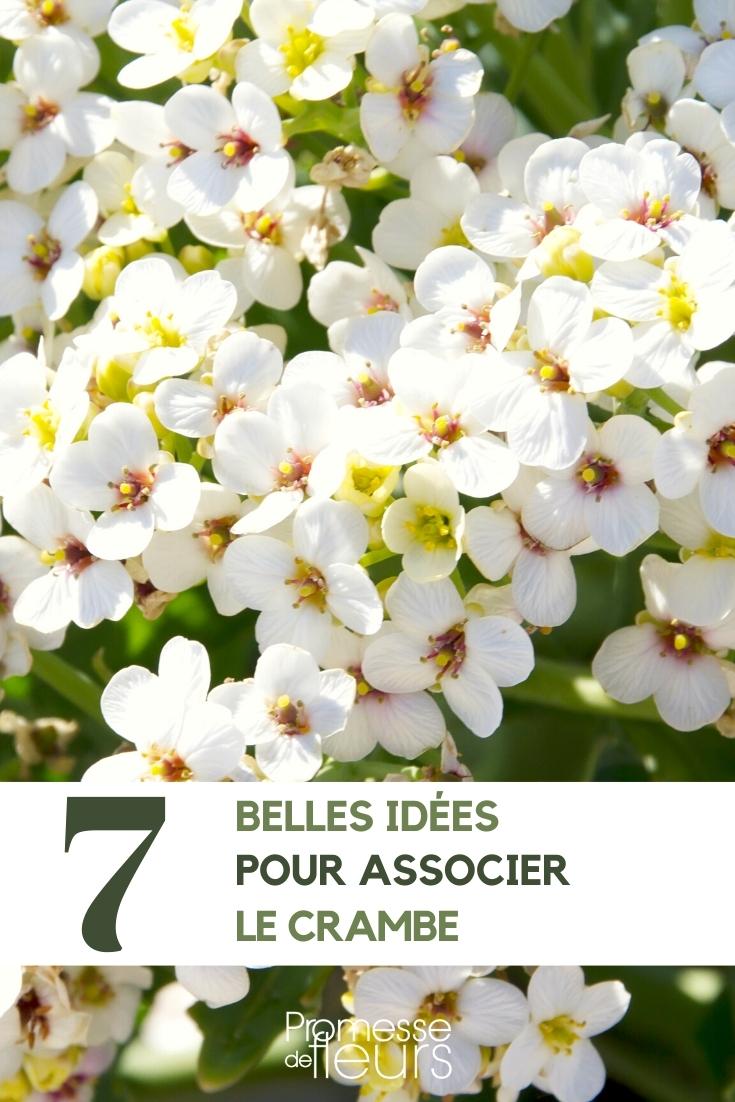































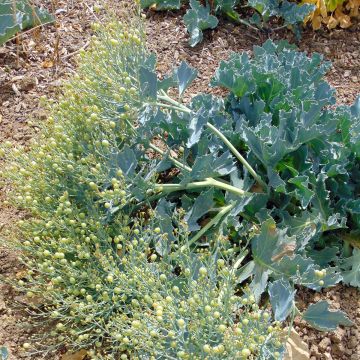
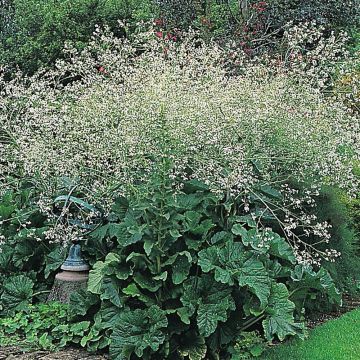


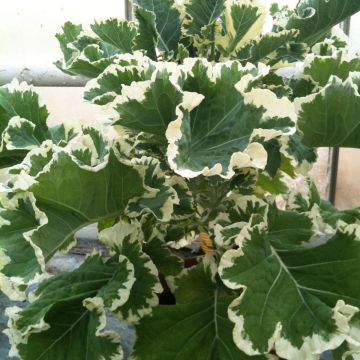
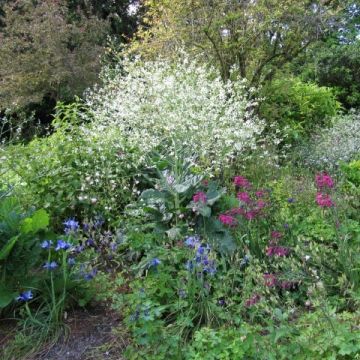
Comments